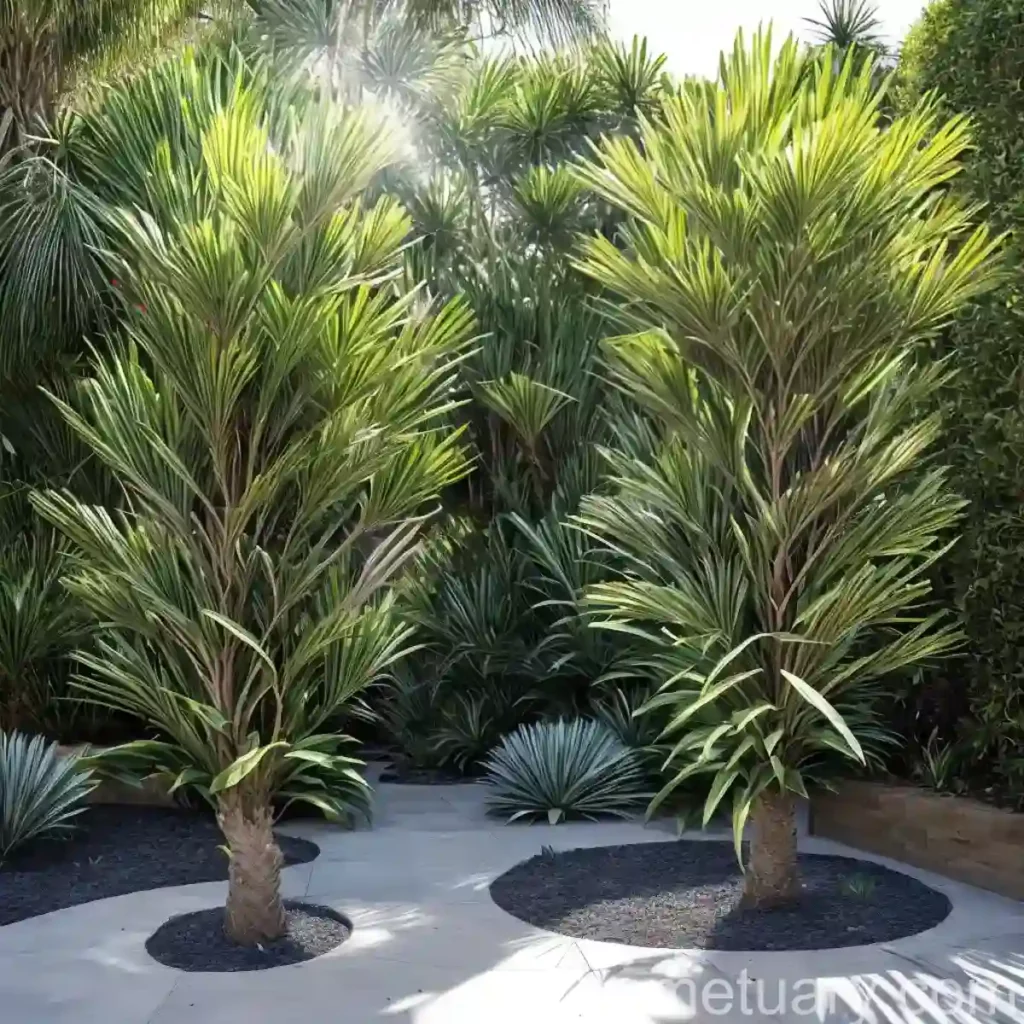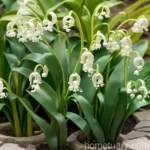Cabbage Tree (Cordyline australis ‘Salsa’): A Comprehensive Guide
Cabbage tree, scientifically known as Cordyline australis ‘Salsa’, is a stunning and versatile plant renowned for its ornamental value and diverse uses. In this comprehensive guide, we will delve into the various aspects of caring for and maximizing the potential of the cabbage tree. From its cultural requirements to propagation techniques, common diseases, and pest control, this extensive guide is your go-to resource for all things related to the magnificent Cordyline australis ‘Salsa’.
What is the Cabbage Tree (Cordyline australis ‘Salsa’)?
The Cabbage tree, known by its botanical name Cordyline australis ‘Salsa’, is a visually striking plant native to New Zealand. It belongs to the Asparagaceae family and is characterized by its distinctive cabbage-like leaves, providing a dramatic focal point in any garden or landscape.
Key Takeaways – Cabbage Tree (Cordyline australis ‘Salsa’)
- Scientific Name: Cordyline australis ‘Salsa’
- Common Name: Cabbage Tree
- Plant Type: Evergreen Tree
- Mature Height: 10-20 feet
- Mature Spread: 5-10 feet
- Sunlight: Full Sun to Partial Shade
- Watering: Moderate
- Soil Type: Well-drained, Sandy
- USDA Hardiness Zones: 8-11
Culture
Uses
The Cabbage tree, Cordyline australis ‘Salsa’, is highly valued for its ornamental appeal and versatile uses. Its striking appearance and resilience make it an ideal choice for various landscaping and gardening applications. Some common uses of the Cabbage tree include:
-
Ornamental Planting: The plant’s vibrant foliage and architectural form make it a popular choice for ornamental planting in a variety of settings, including residential gardens, parks, and commercial landscapes.
-
Screening and Hedging: Due to its dense growth habit, the Cabbage tree is often utilized as a privacy screen or a natural hedge, providing both visual interest and functional benefits.
-
Container Planting: The plant’s adaptability to containers makes it a great choice for adding a dramatic focal point to outdoor spaces, such as patios, balconies, and courtyards.
Water
Watering Schedule for Cabbage Tree
-
Young Plants: Newly planted cabbage trees should be watered regularly to establish strong root systems. Water deeply once or twice a week, especially during dry periods.
-
Established Plants: Once established, cabbage trees are moderately drought-tolerant. However, during prolonged periods of drought, it is essential to provide supplemental watering to maintain plant health and vitality.
Watering Tips for Cabbage Tree
-
Water the plant at the base to ensure deep penetration and encourage root development.
-
Avoid overwatering, as cabbage trees are susceptible to root rot in waterlogged conditions.
-
During hot and dry periods, consider mulching around the base of the plant to conserve soil moisture and regulate temperature.
Sunlight
Sunlight Needs
Cabbage trees thrive in locations with ample sunlight, making full sun to partial shade ideal for their growth and development. When selecting a planting site, consider the following sunlight-related factors:
-
Full Sun: Planting in full sun locations will promote optimal foliage coloration and overall vigor. Ensure that the plant receives at least 6-8 hours of direct sunlight per day.
-
Partial Shade: While cabbage trees prefer full sun, they can also tolerate partial shade conditions. However, prolonged lack of sunlight may result in reduced growth and less vibrant foliage.
Fertilizer
Fertilizer Requirements for Cordyline australis ‘Salsa’
-
Timing: Apply a balanced, slow-release fertilizer in early spring to provide essential nutrients for the upcoming growing season.
-
Frequency: Repeat the fertilizer application in late spring or early summer to sustain healthy growth and vibrant foliage.
Choosing the Right Fertilizer:
-
Select a fertilizer specifically formulated for ornamental plants, ensuring a balanced ratio of essential nutrients, including nitrogen, phosphorus, and potassium.
-
Avoid over-fertilization, as this can lead to excessive foliage at the expense of overall plant health.
Soil
Soil Requirements for Cordyline australis ‘Salsa’
Cabbage trees thrive in well-drained, sandy soils that provide adequate aeration and moisture retention. When preparing the planting site or selecting a container, consider the following soil-related factors:
-
Drainage: Ensure that the soil offers good drainage to prevent waterlogging, which can lead to root rot and other detrimental conditions.
-
pH Levels: Cabbage trees prefer slightly acidic to neutral soil pH (pH 6.0-7.0). Conduct a soil test to determine the existing pH levels and make necessary amendments to achieve the ideal range.
-
Soil Composition: A sandy loam soil with good organic content is beneficial for supporting the growth and vitality of cabbage trees.
Pruning
Pruning Cabbage Tree Plants
Proper pruning is essential for maintaining the health, aesthetics, and structural integrity of cabbage tree plants. Follow these guidelines for effective pruning:
-
Remove Dead or Damaged Foliage: Regularly inspect the plant for dead or damaged leaves and stems, and promptly prune them to promote overall plant health and appearance.
-
Thinning: To enhance air circulation and reduce density, selectively remove older or overcrowded stems from the center of the plant using sterilized pruning tools.
-
Shape Maintenance: Trim the outer foliage to maintain the desired shape and overall form of the cabbage tree, ensuring a balanced and visually appealing appearance.
Pruning Techniques for Cabbage Tree
-
Use sharp, clean pruning shears or loppers to make precise cuts and minimize the risk of introducing pathogens to the plant.
-
Prune during the plant’s dormant season or during early spring to minimize stress and facilitate efficient recovery.
Propagation
How to Propagate Cabbage Tree
Cabbage trees can be propagated through several methods, including seed germination, stem cuttings, and offshoot division. Consider the following propagation techniques when expanding your cabbage tree collection:
- Seed Germination:
- Collect ripe seeds from the plant and sow them in well-draining seed-starting mix.
-
Maintain consistent moisture and warmth to facilitate germination, and transplant the seedlings into individual containers once they develop several sets of true leaves.
-
Stem Cuttings:
- Take 4-6 inch stem cuttings from a healthy, mature cabbage tree plant.
- Remove the lower leaves and dip the cut end in rooting hormone before planting in a well-draining potting mix.
-
Provide adequate warmth and humidity to promote root development.
-
Offshoot Division:
- If your cabbage tree produces offshoots or suckers, carefully separate them from the parent plant using a sharp, sterilized knife.
- Plant the offshoots in separate containers with well-draining soil and water them regularly to encourage establishment.
Container Popularity
Cabbage trees are popular container plants due to their striking appearance, adaptability, and versatility in various settings. When selecting containers for cabbage tree cultivation, consider the following factors:
-
Size: Choose a container that accommodates the size of the cabbage tree, allowing ample root space for growth and development.
-
Drainage: Select containers with drainage holes to prevent waterlogging and promote healthy root conditions.
-
Material: Opt for durable, weather-resistant materials such as terracotta, fiberglass, or lightweight resin, considering the plant’s long-term container requirements.
Container
Common Diseases
Disease Diagnosis
Common Pests
Cabbage Tree Pest Control
Cabbage trees may encounter various pests, including aphids, scale insects, and caterpillars. Implement the following pest control measures to protect your cabbage tree from infestations:
-
Regular Inspection: Monitor the plant regularly for signs of pest activity, including sticky residues, distorted foliage, or visible insects.
-
Natural Predators: Encourage natural predators such as ladybugs and lacewings, which feed on common cabbage tree pests, and create a balanced ecosystem in the garden.
-
Horticultural Oils: Apply horticultural oils to suffocate soft-bodied pests such as aphids and scale insects while minimizing harm to beneficial insects.
-
Organic Sprays: Utilize organic insecticidal sprays, such as neem oil or insecticidal soap, to target specific pest populations while minimizing environmental impact.
Botanist’s Tips
Fun Facts
Here are some intriguing and noteworthy facts about the Cabbage tree (Cordyline australis ‘Salsa’):
-
Cultural Significance: In Maori culture, the cabbage tree holds both symbolic and practical importance, with various parts of the plant being traditionally utilized for weaving, construction, and food sources.
-
Tolerant of Coastal Conditions: Cabbage trees exhibit a high tolerance for coastal environments, making them well-suited for gardens and landscapes near the sea.
-
Wildlife Attraction: The flowering spikes of cabbage trees attract pollinators, including bees and butterflies, contributing to the biodiversity of the surrounding ecosystem.
-
Longevity: Mature cabbage trees can live for decades, with some specimens reaching impressive ages and establishing iconic presence in their habitats.
Links to External Resources
For more detailed information about the Cabbage Tree (Cordyline australis ‘Salsa’) and related topics, explore the following links:
- New Zealand Plant Conservation Network – Cordyline australis
- Royal Horticultural Society – Growing Cordyline australis (cabbage tree)
- University of Florida IFAS Extension – Cordyline australis Fact Sheet
In conclusion, the Cabbage tree, Cordyline australis ‘Salsa’, stands as a captivating and versatile addition to gardens, landscapes, and container displays. By understanding and applying the key considerations outlined in this guide, you can cultivate and appreciate the unique beauty and resilience of this remarkable plant. Whether used as a striking focal point, a functional hedge, or an ornamental container specimen, the Cabbage tree offers an array of benefits and endless possibilities for enriching outdoor spaces and creating lasting visual impact.
References
-
Burns-Balogh, P., & Turner, B. L. (2011). Cordyline australis. Fire Effects Information System, U.S. Department of Agriculture, Forest Service.
-
Stewart, A. V. (2007). Cordyline australis. Curtis’s Botanical Magazine, 24(4), 43-51.
-
Wakelin, B. (2018). Cultivar introduction: Cordyline australis ‘Salsa’. New Zealand Garden Journal, 14(2), 89-94.
-
Wilson, K. L., & Johnson, L. A. S. (1989). Taxonomic history and nomenclature of Cordyline (Agavaceae). Phytologia, 66, 453-460.
-
Wilson, K. L., & Johnson, L. A. S. (1991). Taxonomic treatment and phytogeography of Cordyline (Lomandraceae). Phyton, 51(2), 145-177.















